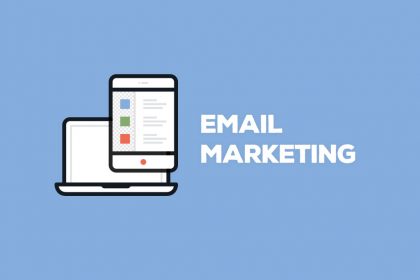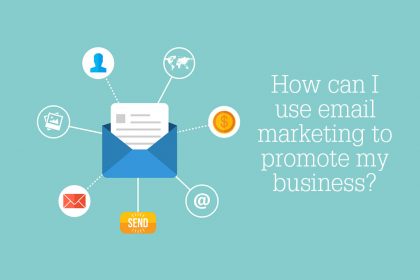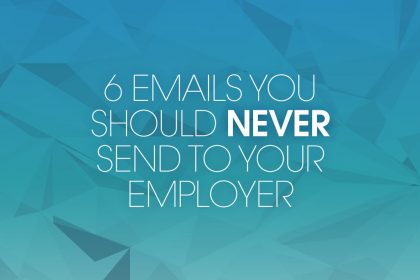Email marketing for small businesses: The definitive guide
As a small business owner, you often have a tight budget. And that’s okay, as you need to carefully manage various costs and aspects of your business to remain profitable.
So, when it comes to marketing, you need a reliable channel to give you the highest returns. With an ROI of a staggering 3600%, or $36 for every dollar you spend, email is the best channel that offers the most bang for your marketing buck.
That said, running an email marketing campaign can be demanding as it involves many moving parts. From finding the best email marketing software to growing an email list and nurturing leads into loyal customers.
That’s why we’ve created this small business email marketing guide to help you get started with this effective channel.
Let’s dive in.
1) Choose the right email marketing service
When you get started with email marketing, the platform you choose will set the tone for your relationship with your audience. A good match means your messages land just right, engaging customers and encouraging them to take action.
Think of your email list (we’ll cover this in the next section) as a goldmine, where each contact represents a future sale. But to leverage this treasure effectively, you need the right tools.
So, what should you consider when looking for an email marketing platform?
Here are some key features to watch out for:
- Marketing automation: Look for a service that offers robust automation options. This way, your emails will get triggered based on specific customer actions. Similarly, you’ll be able to schedule emails so they get sent at the appropriate time.
- Deliverability: Your emails are only worthwhile if they reach the customers’ inboxes. Top-notch services like Sender, Constant Contact, and GetResponse offer high email deliverability which ensures recipients receive your emails and they don’t get lost in spam folders.
- Scalability: Your business won’t stay small forever, right? The software you invest in should grow with you and handle increasing workloads without skipping a beat.
- Compliance: The last thing you want is legal trouble over email regulations. The right email marketing platforms navigate these waters well to keep you compliant with laws like the General Data Protection Regulation (GDPR).
- Ease of use: You need an intuitive, straightforward platform without unnecessary complications. Therefore, look for a service with a user-friendly interface where creating beautiful, compelling emails is a breeze.
- Templates and design tools: Pick a platform that offers responsive templates and a drag-and-drop editor. This will make it simple to craft professional emails that resonate with your audience and align with your brand’s unique voice.
- Analytics and reporting: Consider email marketing services that provide detailed analytics and reporting tools. That way, you can see what’s working, what isn’t, and where there’s room for improvement.
- Customer support: Even the most experienced marketers need a helping hand sometimes. Opt for email marketing tools that offer reliable and friendly customer support. It can be reassuring to know expert advice is just a call or click away when you face any challenges.
2) Build your email list through signups
After choosing your preferred email service provider, the next step is to build your email list.
Building a subscriber list is like planting seeds for your small business’s future. So remember, it’s not just about numbers; it’s about cultivating a list of interested, engaged individuals who genuinely want to hear from you.
The simplest way to acquire quality signups is to strategically place opt-in forms on your site — like the homepage, blog posts, or the footer. The forms should be simple with a few fields. The fewer the steps, the better.
Additionally, if you’re in the recruitment industry, consider leveraging recruitment management software to efficiently collect and manage email subscriptions from potential candidates and clients.
Here’s an example of a good signup form:
Image source: Sender
You can also offer something irresistible that speaks directly to your audience’s needs or interests to make your signup forms more effective — whether it’s a free ebook, a discount code, or exclusive access to content. Just make sure it’s something that adds real value to your target audience.
3) Segment your audience and create buyer personas
With segmentation, you can tailor your messages to specific groups within your audience, which makes your emails more relevant and personal. In other words, it helps you deliver the correct message to the appropriate people at the right time.
Recent research shows that 64% of marketers use customer segments to personalize their marketing campaigns. This means segmentation and personalization are crucial when creating an email marketing strategy.
So, how can you masterfully segment your audience?
Start by looking at the data you already have. This includes past purchase behavior, email engagement rates, or basic demographic information.
Depending on your business model, use this data to group your customers based on factors like location, age, purchase history, or even specific interests.
After that, you can create buyer personas (semi-fictional representations of your ideal customers). This will help you understand your audience better and make it easy for you to tailor content to the specific behaviors and needs of different groups.
For example, let’s say you run an ecommerce store that sells eco-friendly products. In that case, you can have a buyer persona like “Eco-friendly Emma.”
Some of her characteristics may include:
- She’s in her early 30s
- Lives in an urban area
- She’s environmentally conscious
- Prefers buying sustainable and organic products
- She’s tech-savvy and active on social media platforms, particularly those focusing on lifestyle and sustainability
Once you’ve established your buyer personas, create content that speaks directly to each group’s needs and interests. Eco-friendly Emma, for example, would appreciate content about your brand’s sustainability efforts, tips on living a greener lifestyle, or new eco-friendly products.
4) Create effective email campaigns
At this point, you’re ready to craft email campaigns that resonate with your audience. But before you do so, be clear about what you want to achieve with your campaigns.
Is it to drive sales? Increase website traffic? Improve customer engagement? Your goals will guide your content and call to action.
Some types of email campaigns you can create include:
- Welcome emails: These help you start your relationship on the right foot with a warm, welcoming message to new subscribers. You can introduce your brand and let customers know what to expect from your emails.
- Newsletters: Regular newsletters are a great way to keep your audience informed and engaged. Share updates, industry news, or tips related to your business.
- Promotional emails: Here, you can send special offers, discounts, or product launches. Make sure these offers are relevant to the segment of your audience you’re targeting.
- Transactional emails: These automated emails are triggered after a customer purchases a product. They include order confirmations, receipts, or shipping updates. Though transactional, they’re also good opportunities to provide value and promote further engagement.
- Re-engagement emails: Use these emails to reach out to subscribers who haven’t interacted with your emails in a while. Remind them about the value you offer and encourage them to re-engage with your content.
Here’s a good infographic showing which email types marketers send most:
Image source: Sender
As you craft your emails, personalize them using the data you collected with signup forms and other tools. Remember, personalized emails tend to have higher engagement than non-personalized ones.
For example, you can address subscribers by name in the subject line. That way, recipients will be 50% more likely to open your emails.
In addition, make sure your emails look good on all devices, especially mobiles. Many people check their emails on the go, so a mobile-responsive design is crucial. In fact, 50% of all emails are opened on mobile devices.
5) Track and improve your email marketing campaigns
Tracking your campaigns helps you gain valuable insights into how your audience interacts with your emails. As a result, you can tweak your strategies to resonate with customers better and increase engagement and conversions.
So, which metrics should you monitor? Let’s look at some crucial ones:
- Open rate: This metric tells you the number of recipients who opened your email. It’s a good indicator of how well your subject line resonates with your audience. If you notice low open rates, consider tweaking your subject lines to be more engaging or relevant.
- Click-through rate (CTR): CTR measures the number of individuals who clicked on one or more links in your email. If your click-through rates are low, it might be a sign that your email content or the call-to-action (CTA) needs to be more compelling.
- Conversion rate: This unit tells you the percentage of people who complete an action after clicking a link in your email. The action could be purchasing, filling out a form, or downloading a resource. It’s a direct indicator of the ROI of your email campaign.
- Bounce rate: This measures the number of emails that weren’t delivered to customers’ inboxes. A high bounce rate could imply issues with your subscriber list quality or email deliverability.
- Unsubscribe rate: This metric shows the number of recipients who opted out of your subscriber list after receiving an email. While it’s natural to have some unsubscribes, a high rate can be a red flag that something is off. Maybe you’re sending emails too frequently, or the content is irrelevant to the audience.
- Spam complaints: This metric tracks how many readers mark your email as spam. Your sender reputation and deliverability could be negatively impacted if you receive a significant number of spam complaints.
Remember, each metric tells a story. Analyze the data and improve your strategy to make your email campaigns more effective as your business grows.
Start your email marketing journey today
Building an email marketing campaign can be challenging for small business owners, especially those doing it for the first time. However, the tips above offer a step-by-step approach to using email to connect with your audience effectively and boost your revenue.
Remember, to succeed in email marketing, you need to understand your audience and offer them value. With an effective strategy, you can strengthen customer relationships and grow your business.
Get started with this effective marketing channel today!










